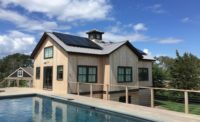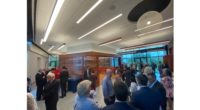Managing Moisture by Using an Achilles Heel




Our walls are wetter than they’ve ever been. This is not because the physics have changed, but because new construction practices are not as easily allowing the moisture that’s getting in, to get out. We have a growing need for increased R-values in our building assemblies along with a steep reduction in air movement through the wall. While these efforts are great from an energy-efficiency standpoint, the lower rate of drying is now presenting our industry with new challenges that cannot be neglected; once these walls get wet, they are staying wet.
Not making things any easier is the advent of new business challenges: popular cladding products hold moisture, the rate of building failures due to moisture keeps increasing, building codes are driving tighter construction and enhanced energy efficiency, and there is a growing shortage of skilled labor and training available.
More Layers, More Issues
The use of continuous insulation on building exteriors and the air tightening of building envelopes only increases the need for the elevated drying potential of fiberglass insulation in the framing cavity. We seem to keep finding ways to add more layers and new materials to our building envelopes. While these additional layers have helped reduce energy losses, they have not managed to keep water out of our walls.
We are human and people make mistakes—like occasionally tucking their raincoat into their rain pants—but we also suffer a disconnect between expected material performance and practice. Here’s some shocking news: In the United States, “self-flashing” residential windows are allowed to leak from “the nailing flange out”.
Now, consider how you are integrating the wrapping of the rough opening with the water resistive barrier and the continuous insulation to ensure that the water, which will come on the face of that window nailing flange, is going to be re-directed to the exterior. Will it wind-up in front of or behind vapor resistive layers? If it is behind resistive layers, chances are very high that the direction of the highest potential rate of drying is actually towards the interior.
Dry and Durable
The vapor open nature of fiberglass, combined with an adaptive “smart” vapor retarder where needed, provides the assembly with the maximum potential for drying moisture that may intrude in these scenarios. It’s a little ironic that with regard to moisture management, what had been considered fiberglass’s “Achilles heel”—being so vapor open—may actually be one of its best benefits. While working to reduce our consumption of energy, we must always keep durability as a principle concern, for there is nothing sustainable about a building that can’t last.
It is important to explore these concepts and practices to develop a thorough understanding of what impacts we can expect in the future due to increasing the energy efficiency of the building envelope and increasing the airtightness levels of today’s homes.
Here is a hint—we can expect the drying potential to be reduced; whereas, our buildings are still getting wet (and may in fact get wetter over time). Managing this moisture will be a key to successfully building the sustainable homes of the future.
Looking for a reprint of this article?
From high-res PDFs to custom plaques, order your copy today!












